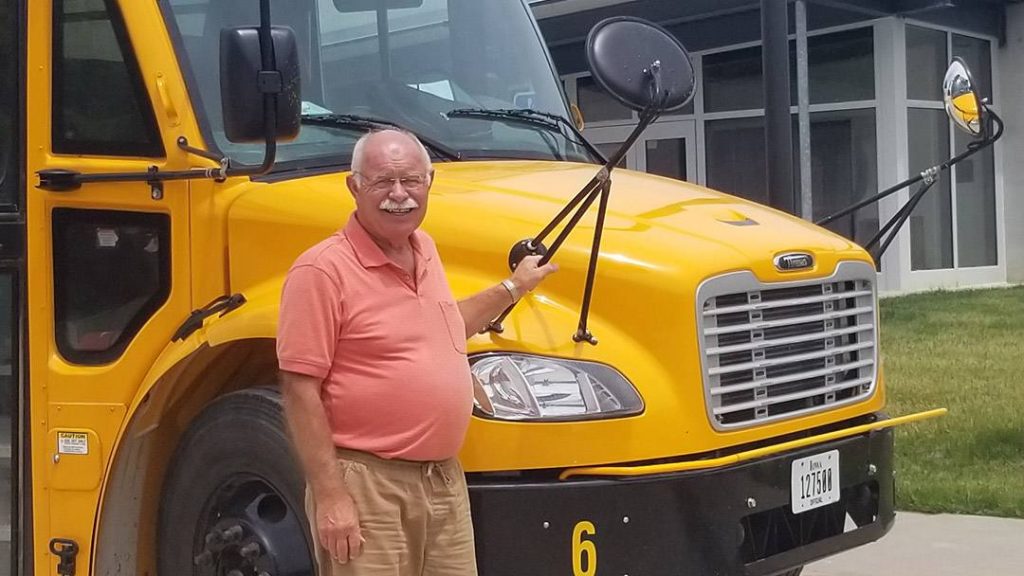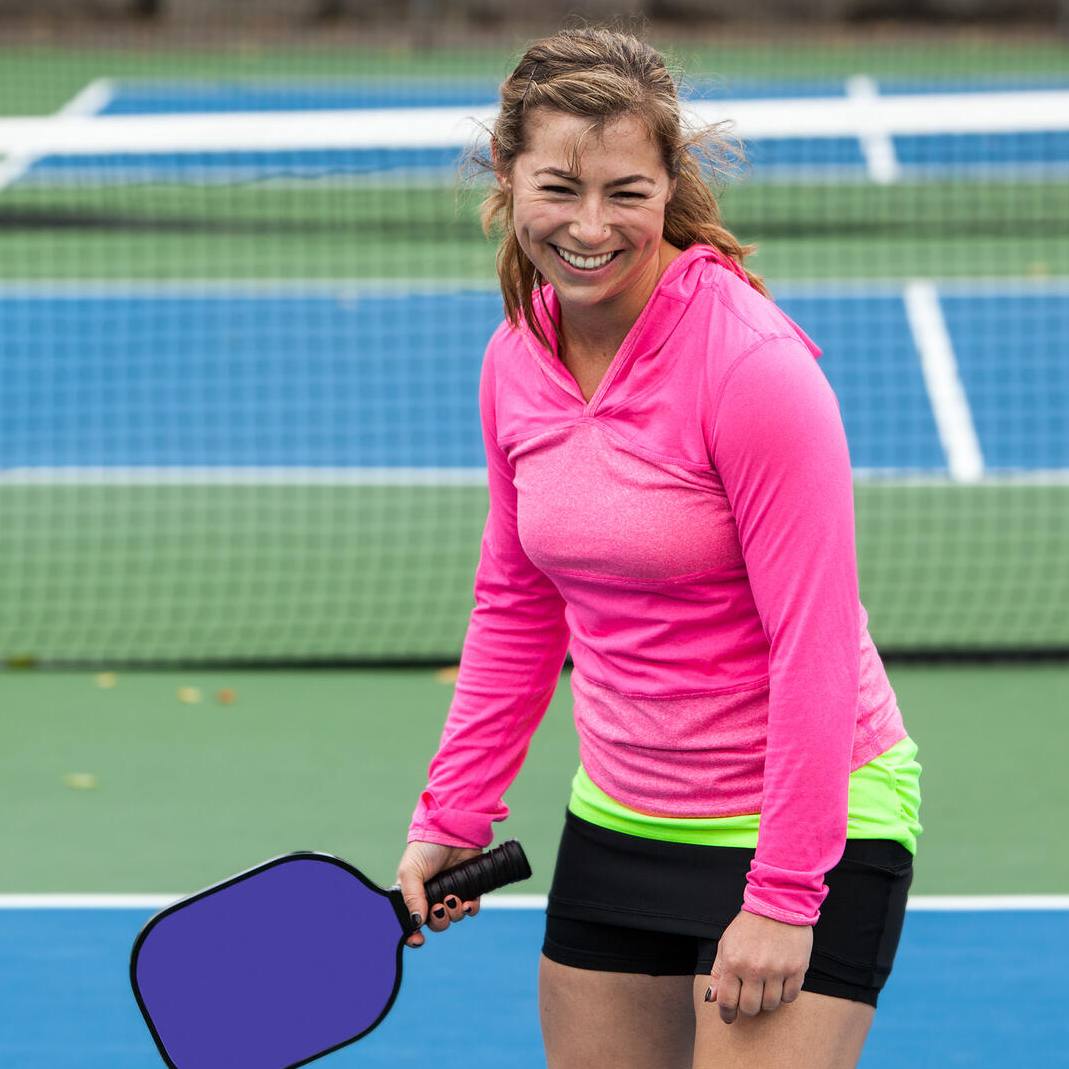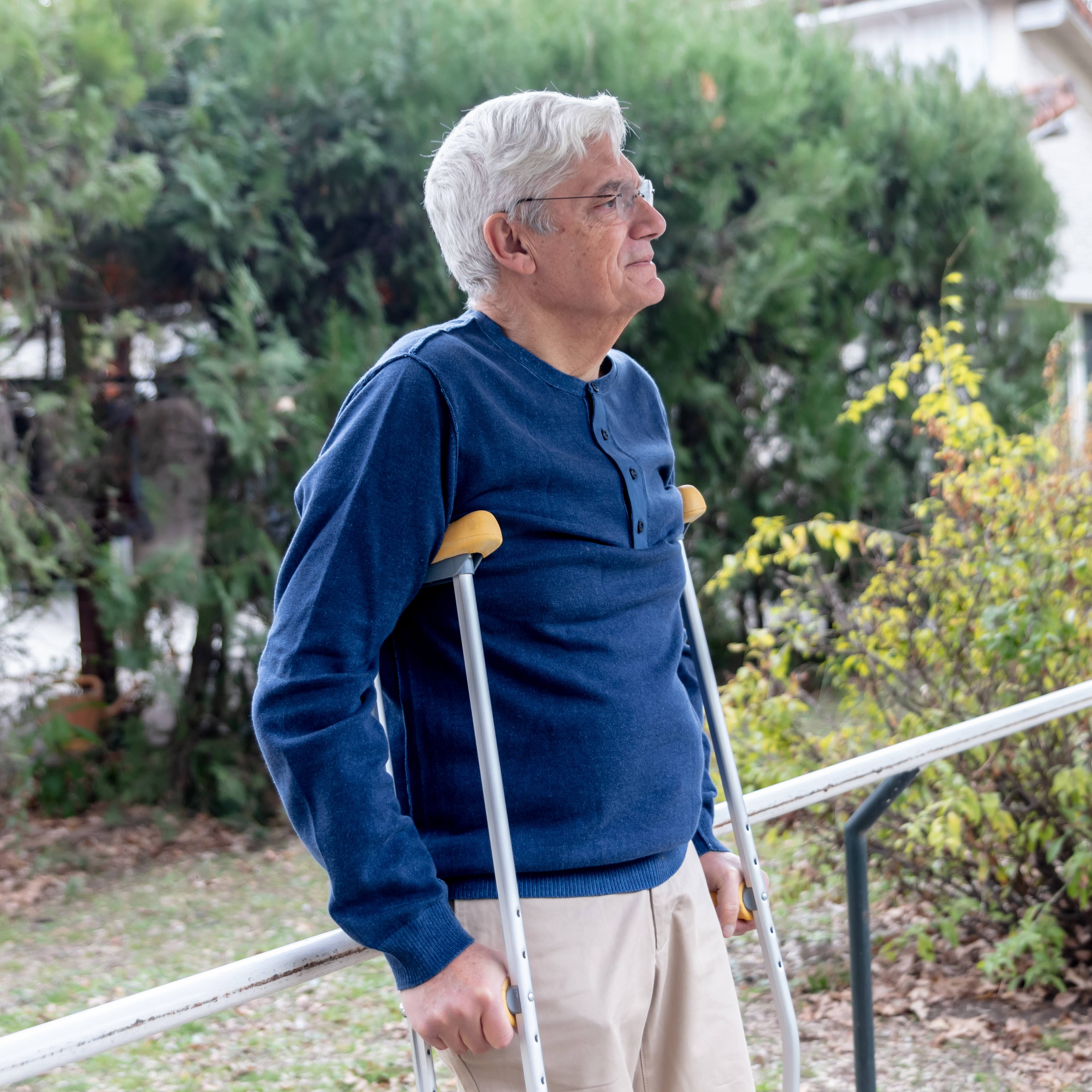-
Orthopedics/Sports
Sharing Mayo Clinic: Spine surgery puts school bus driver back behind the wheel

For more than a decade, Mike Ramsey suffered from debilitating pain due to a severe spinal deformity. He thought disability and pain would always dominate his life. Then he met a neurosurgeon at Mayo Clinic who offered him a path to relief. Today, Mike is pain-free.
Mike Ramsey dealt with lower back pain for years. For a while, he used ibuprofen to ease the discomfort. But the pain, caused by a progressive curvature of his spine, got worse over time. In 2007, Mike began receiving spinal injections to reduce the pain, and his primary care doctor in Des Moines, Iowa, prescribed hydrocodone for pain management. But the pain didn't go away.
In search of other options, Mike met with a local orthopedic surgeon who informed him spinal fusion surgery was the only treatment alternative available. But because Mike's curvature was so severe, the surgeon told Mike that he didn't feel comfortable performing the procedure.
So Mike kept taking medication and receiving spinal injections. But he remained in constant, life-crippling pain. "I had 32 injections between January 2007 and February 2017," says the 73-year-old school bus driver. "I couldn't walk across a store because the pain was so bad. I couldn't walk or drive for long periods of time."
Despite being an avid golfer and coaching summer high school softball for many years, Mike could no longer exercise due to the pain. "The only relief I had was at night when I would lie down," Mike says. "I felt I was going to be in a wheelchair the rest of my life."
A new way forward
In January 2018, when he could no longer stand for five minutes because of the pain, Mike decided he had to try something different. He made an appointment for a consultation at Mayo Clinic's Rochester campus with neurosurgeon Benjamin Elder, M.D., Ph.D. That appointment changed Mike's life.
"I told him, 'All I want to do is walk.' And he said, 'I can help you walk.' My wife and I were both in tears," Mike says. "He listens to you and wants to hear what you have to say. He's so personable. We started talking about family and just made a connection."
"I told (Dr. Elder), 'All I want to do is walk.' And he said, 'I can help you walk.' My wife and I were both in tears."
Mike Ramsey
Dr. Elder told Mike he had adult degenerative scoliosis. The condition develops when discs and joints in the lower back break down unevenly, often as a result of aging. In Mike's case, it had led to a severe side-to-side curvature in his back. He also had a severe flat-back deformity that forced him to walk hunched forward.
"He had four vertebrae that had fused together on their own, and in poor alignment, causing his severe scoliosis. Because the vertebrae were crooked and pointing forward, they prevented him from being able to stand up straight," Dr. Elder says. "To compensate, he was straightening the upper back, bending his knees and then rocking his pelvis back to pull his body up and maintain an upright posture, leading to significant pain and fatigue in the muscles of the leg, pelvis and back."
The daily challenges Mike faced due to his spine issues aren't uncommon for people in his situation, according to Dr. Elder. "Unfortunately, patients with these complex spinal deformities are severely disabled, often with a quality of life approaching that of double amputees," he says. "When I first met Mike, he had significant difficulty with things as simple as walking around his school bus in the morning. He would constantly walk into the sideview mirror, since he couldn't stand up straight to look forward."
Dr. Elder explained to Mike that he could help, but the process would involve fusing eight vertebrae in Mike's spine together. After talking it over with Dr. Elder, Mike felt confident the surgery would provide him with relief. They scheduled surgery for Feb. 21, 2018.
An expert solution
During the 10-hour procedure, Dr. Elder cut out a complex wedge of bone from the segment of Mike's vertebrae that had fused together. Then, to correct the curvature, he cut smaller wedges from the mobile spine segments.
"We then put metal spacers in between those vertebrae to lengthen the front of his spine and correct his flat-back deformity," Dr. Elder says. "We put screws in from the lower part of the midback to the bottom of the spine and into the pelvis, as well as rods to hold everything in place while it healed in a new configuration."
Mike went home after a week in the hospital. But his surgical experience wasn't over yet. The reconstruction at the bottom of his spine required a second surgery to ensure Mike's back would be strong enough and would grow together correctly. During that second surgery, on March 28, 2018, Dr. Elder took a piece of a cadaver leg shaped to fit in the disc space and placed it in the gap to further stabilize the bottom level of Mike's spine.
"These are challenging operations that require a specialized center with a multidisciplinary team of experts from vascular surgeons to critical care physicians and rehab teams who can care for patients at each stage of their treatment and recovery," Dr. Elder says.
A happier, pain-free life
After the surgeries, daily life began to get easier for Mike. "About a month after the second surgery, I noticed things really starting to turn around," he says. "I had been walking with a walker and was feeling much stronger with very little pain."
"It was wonderful to be back out doing things and being with people."
Mike Ramsey
In early June, after a five-month hiatus, Mike went back to driving his school bus, taking the softball team to their games. "I drove 2½ hours to Northern Iowa. It felt great to do that and have no pain whatsoever," Mike says. "I love being around kids. It was wonderful to be back out doing things and being with people."
Now, for the first time in 18 years, Mike has no back pain at all. "Before the first surgery, I stopped taking the hydrocodone that I'd been taking for 10 years, and I haven't taken it since," he says. "I don't even take aspirin. It's a miracle."
For his pain-free days, Mike's thankful to his team at Mayo Clinic who, he says, gave him top-notch care.
"Mayo is well-organized. Everyone is so friendly and answers any questions you have. I was always thanking people because they'd go so far out of their way to help me," Mike says. "I'm most grateful to Mayo for having people like Dr. Elder who can perform surgeries like this and change people's lives. He changed mine."
HELPFUL LINKS
- Read more about spinal fusion.
- Learn about Mayo Clinic's Department of Neurosurgery.
- Connect with others talking about spine health on Mayo Clinic Connect.
- Explore Mayo Clinic's Rochester campus.
- Request an appointment.
Related Articles







